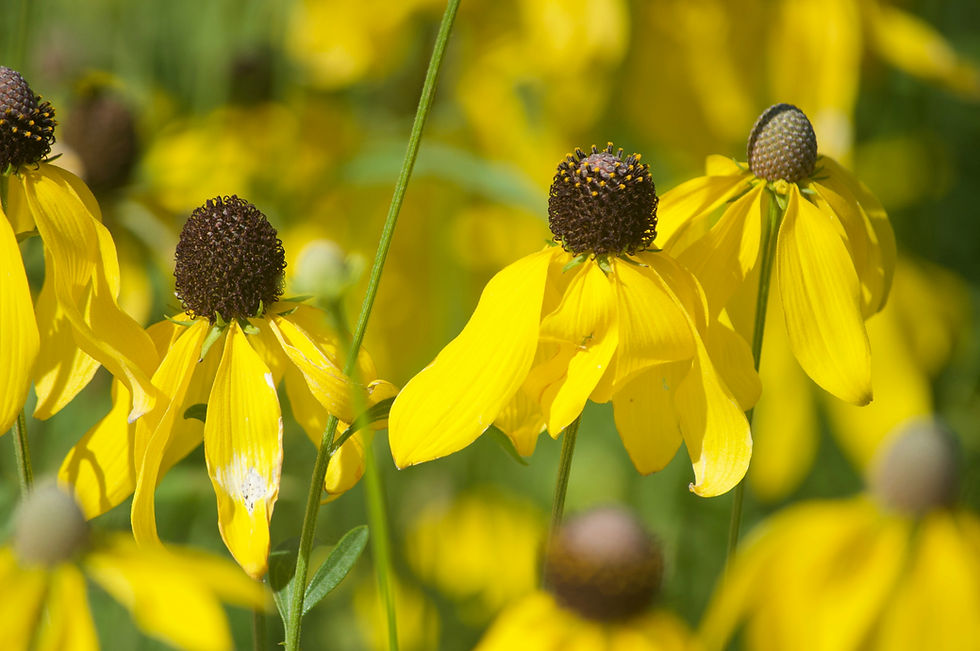Enhancing Your Backyard with Water Features to Boost Biodiversity and Wildlife Interaction
- Colton P.
- Mar 14
- 4 min read
Updated: Apr 30
When you think about transforming your backyard, consider adding water features. These can enhance your space not only visually but also environmentally. Ponds, fountains, and streams create inviting habitats that support biodiversity and attract various forms of wildlife. In this guide, we'll explore how these elements can enrich your outdoor living space and foster a thriving local ecosystem.
The Role of Water Features in Biodiversity
Adding a water feature to your backyard significantly increases habitat diversity, which is essential for wildlife. Water bodies act as vital resources for numerous plants and animals, especially in urban areas where natural habitats may be scarce. A well-planned water feature can nurture a variety of organisms, from vibrant aquatic plants to terrestrial animals, thus boosting your yard's biodiversity.
For example, consider introducing native plants like water lilies or cattails in a pond. These plants not only provide shelter but also serve as food sources for many species. The diverse plant life can attract insects, which are crucial for the food chain and support larger wildlife like birds, amphibians, and small mammals seeking food, water, and breeding spots.
A water feature can also become a breeding ground for local wildlife. Frogs and toads, for instance, often lay their eggs in the safe environment of ponds. In warmer months, their calls add a delightful backdrop to your outdoor experience, immersing you in the sounds of nature.
Attracting Wildlife to Your Backyard
Incorporating a water feature in your backyard will draw a variety of wildlife, enhancing your outdoor experience:
Birds: Species like robins, sparrows, and blue jays are often attracted to nearby water sources for drinking and bathing. Placing a birdbath next to your pond can greatly increase these visits.
Amphibians: Frogs, toads, and newts thrive in water-rich environments. These creatures help control insect populations, making your garden healthier.
Insects: Dragonflies and damselflies are powerfully drawn to water features. They are not only beautiful but also serve as natural predators of mosquitoes, helping to keep pest numbers down.
Mammals: Animals like raccoons and deer may come to hydrate, adding excitement to your wildlife observation sessions.
By creating a lush environment that attracts these species, you will contribute to a balanced and healthy local ecosystem. Each species plays a role in supporting a sustainable environment.
The Benefits of Reduced Noise Pollution
Water features do more than boost biodiversity; they also help reduce noise pollution. The gentle sounds of flowing water can mask disruptive noises from traffic, construction sites, or busy neighbors, turning your backyard into a serene retreat. This calming atmosphere encourages relaxation and can significantly reduce stress levels.
In fact, studies show that the sound of flowing water can improve mood and emotional well-being. After a long day, stepping outside to enjoy the soothing sounds of flowering water can help rejuvenate your spirit.
An Interactive Experience for Kids
Water features are excellent educational tools for children, sparking their curiosity about the natural world. Setting up a pond or fountain can provide valuable learning experiences about local wildlife, ecosystem dynamics, and the importance of habitat conservation.
Kids can observe insects flitting about the water, frogs jumping from lily pads, and birds enjoying a bath. These moments encourage a genuine appreciation for nature and nurture a sense of responsibility toward the environment.
Create a “nature adventure” area near your water feature where children can explore safely. You might encourage them to construct small bridges with rocks or plant native flowers. These hands-on activities can inspire a lasting interest in nature and environmental stewardship.
Design Tips for Your Water Feature
To make the most out of your water feature, consider these design strategies:
Choose Native Plants: Opt for a mix of native aquatic plants that provide essential shelter and food for local wildlife.
Create Diverse Depths: Varying pond depths allows for different habitats. Shallow areas are ideal for plants and fish breeding, while deeper sections provide refuge for fish.
Include Sheltering Structures: Rocks or logs added to your pond can create vital habitats for frogs and other small creatures.
Ensure Clean Water: Regular maintenance helps prevent algae blooms and supports a healthy ecosystem.
Add Movement: Features with moving water, such as fountains or streams, oxygenate the water, improving conditions for aquatic life.
By following these guidelines, you can establish a vibrant water feature that not only beautifies your backyard but also fosters biodiversity.
A Fresh Perspective on Your Outdoor Space
Incorporating water features into your backyard provides extensive benefits for biodiversity, wildlife, and personal enjoyment. Water not only creates habitats that attract various species but also allows you to connect with nature from the comfort of your home.
With added advantages like decreased noise pollution and opportunities for children to learn and explore, a water feature enriches your landscape and your life.
As you begin this exciting project, keep sustainability in mind. Your water feature can become a thriving part of your local ecosystem, benefiting both you and the wildlife around you.





Comments